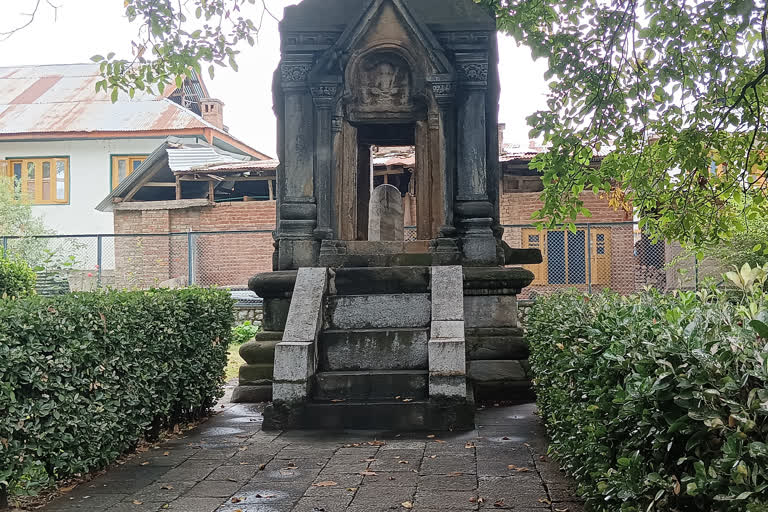Payer (Pulwama): An attractive heritage site in South Kashmir's Pulwama district, an ancient Siva temple from the 10th century in the Payer village displays the communal harmony in the area in all its beauty. Carved from a single monolith stone, the upkeep of the temple is done by local Muslim families who make up the entire population of the village.
The shrine finds a mention in 'The Valley of Kashmir', written by British Settlement Commissioner Sir Walter Roper Lawrence, who marked coordinates to the location as well. The temple was built during the reign of Narendraaditya, who ruled the valley between 483 AD and 490 AD.
"It is an archaeologically important village. It gives us an indication that this village was inhabited during the stone age," said Rouf Bhat, a history researcher. "Most travelers in history have visited this place" he added. After the large-scale exodus of the Kashmiri Pandit community out of the valley in the early 1990s as militancy erupted in the region, the shrine was largely maintained by local Muslim families.
According to officials, 208 temples in Kashmir suffered damages owing to non-usage during the last three decades. Village headman Ghulam Muhammad, meanwhile, says locals treat it as 'their own heritage. "We have been taking care of this temple all along.
It is our own heritage, an example of communal harmony and tolerance," he noted. In 2020, the Archaeological Survey of India (ASI) sealed the temple from all four sides and has since taken over its maintenance and protection, he further said.



